Chilkat Robe
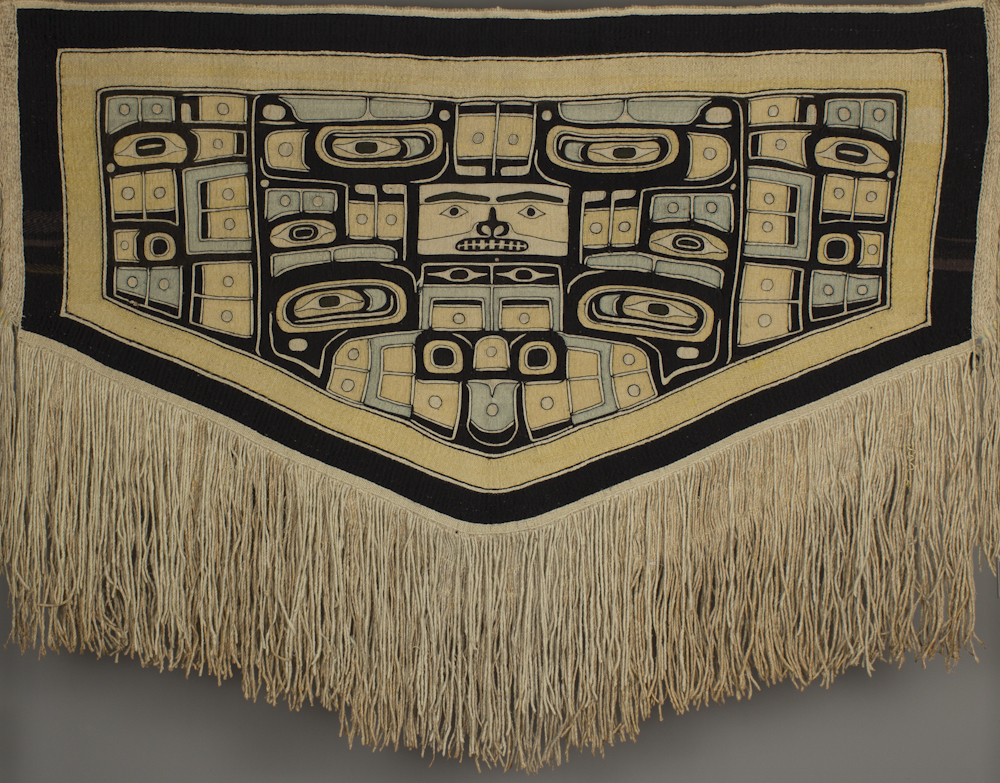
Tlingit artist, Chilkat Robe, ca. 1880, cedar bark, cotton yarn, and mountain goat wool yarn, The Elizabeth Cole Butler Collection, no known copyright restrictions, 87.88.80
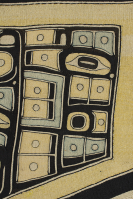
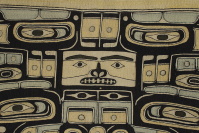
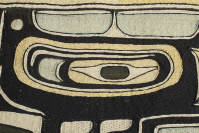
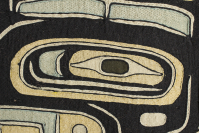
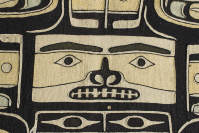
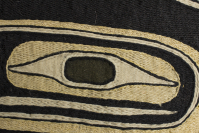
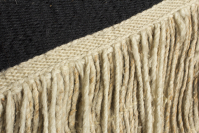
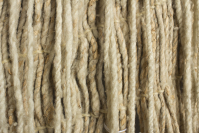
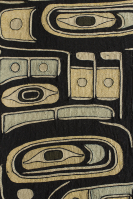
This work is not currently on view.
- Title
Chilkat Robe
- Artist
- Date
ca. 1880
- Medium
cedar bark, cotton yarn, and mountain goat wool yarn
- Dimensions (H x W x D)
50 x 70 in
- Collection Area
Native American Art
- Category
Northwest Coast
Clothing and Textiles
- Object Type
robe
- Cultural Group
Tlingit
- Credit Line
The Elizabeth Cole Butler Collection
- Accession Number
87.88.80
- Copyright
no known copyright restrictions
- Terms
Northwest Coast Native American styles
- Place Made
Created in: Haines
Chilkat blankets, created by a complex form of tapestry twining, are the best-known textiles of the Northwest Coast. Emblems of nobility, they are prized for their crest significance, as well as for their beauty and fine workmanship. The labor-intensive process used to create a Chilkat blanket includes procuring and processing the materials, spinning the mountain goat wool wefts and the cedar bark and wood warps, dying the wefts, and weaving the blanket. The highly abstract designs of crest animals on Chilkat blankets fill the entire design space. The center panel of this design represents a diving whale, with the broad head filling the lower half while the spread-out tail flukes occupy the space along the upper border. A rectangular human face appears in the center of the whale's body.









